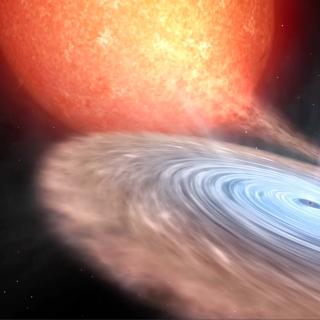Bibcode
Pattie, E. C.; Maccarone, T. J.; Britt, C. T.; Heinke, C. O.; Jonker, P. G.; Lorimer, D. R.; Sivakoff, G. R.; Steeghs, D.; Strader, J.; Torres, M. A. P.; Wijnands, R.
Bibliographical reference
Monthly Notices of the Royal Astronomical Society
Advertised on:
6
2024
Citations
0
Refereed citations
0
Description
We present the results of a high angular resolution (1.1 arcsec) and sensitivity (maximum of ~0.1 mJy) radio survey at 1-2 GHz in the Galactic Bulge. This complements the X-ray Chandra Galactic Bulge Survey, and investigates the full radio source population in this dense Galactic region. Radio counterparts to sources at other wavelengths can aid in classification, as there are relatively few types of objects that are reasonably detectable in radio at kiloparsec distances, and even fewer that are detected in both X-rays and radio. This survey covers about 3 sq deg of the Galactic Bulge Survey area (spanning the Galactic coordinate range of -3° < l < +3° and +1.6° < b < +2.1°) as a first look into this region of the Galaxy with this combination of frequency, resolution, and sensitivity. Spectral indices within the observed band of 1-2 GHz were calculated for each source to assist in determining its emission mechanism. We find 1617 unique sources in the survey, 25 of which are radio counterparts to X-ray sources, and about 100 of which are steep-spectrum (α ≲ -1.4) point sources that are viable pulsar candidates. Four radio sources are of particular interest: a compact binary; an infrared transient with an inverted radio spectrum; a potential transitional millisecond pulsar candidate; and a very steep spectrum radio source with an X-ray and bright infrared counterpart. We discuss other notable sources, including possible radio transients, potential new planetary nebulae, and active galactic nuclei.
Related projects

Black holes, neutron stars, white dwarfs and their local environment
Accreting black-holes and neutron stars in X-ray binaries provide an ideal laboratory for exploring the physics of compact objects, yielding not only confirmation of the existence of stellar mass black holes via dynamical mass measurements, but also the best opportunity for probing high-gravity environments and the physics of accretion; the most
Montserrat
Armas Padilla